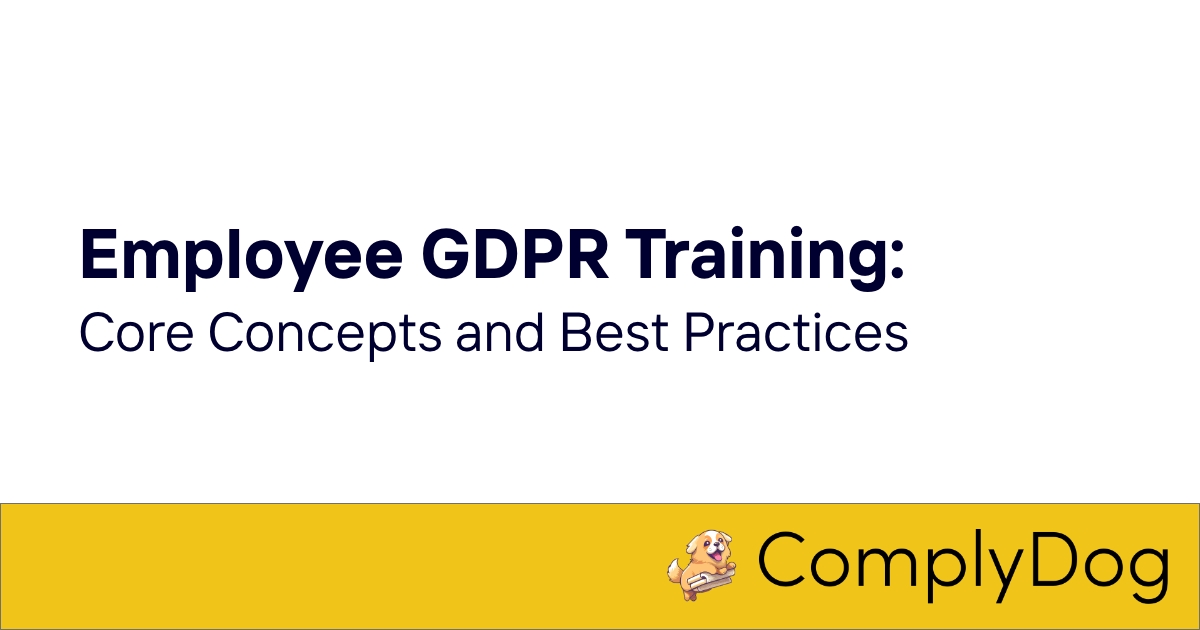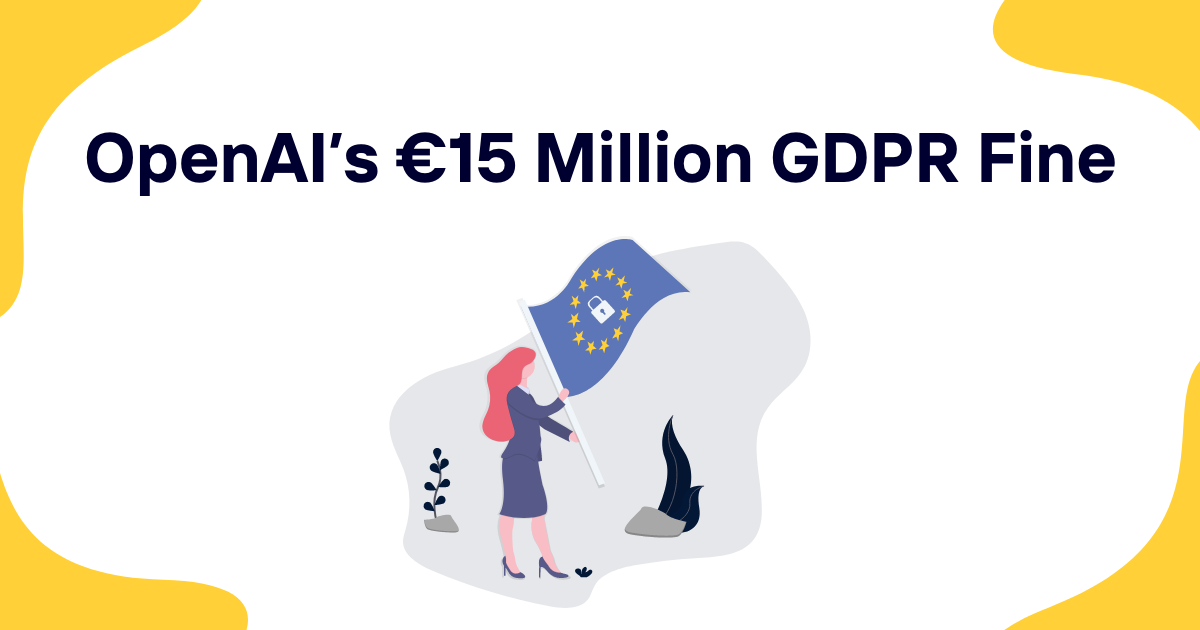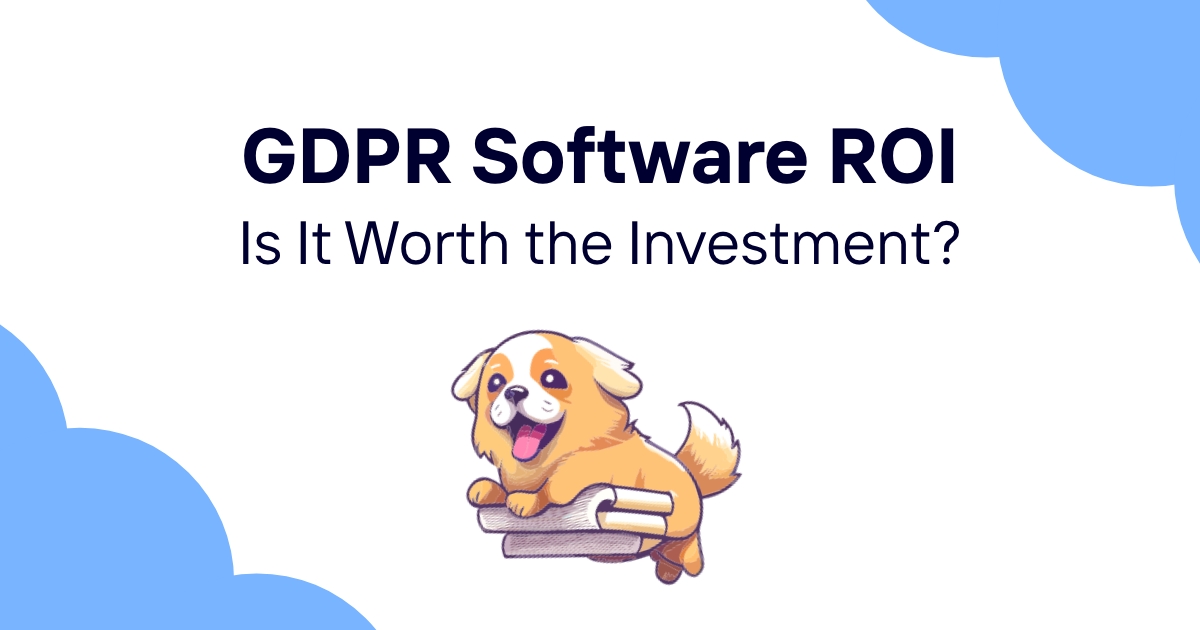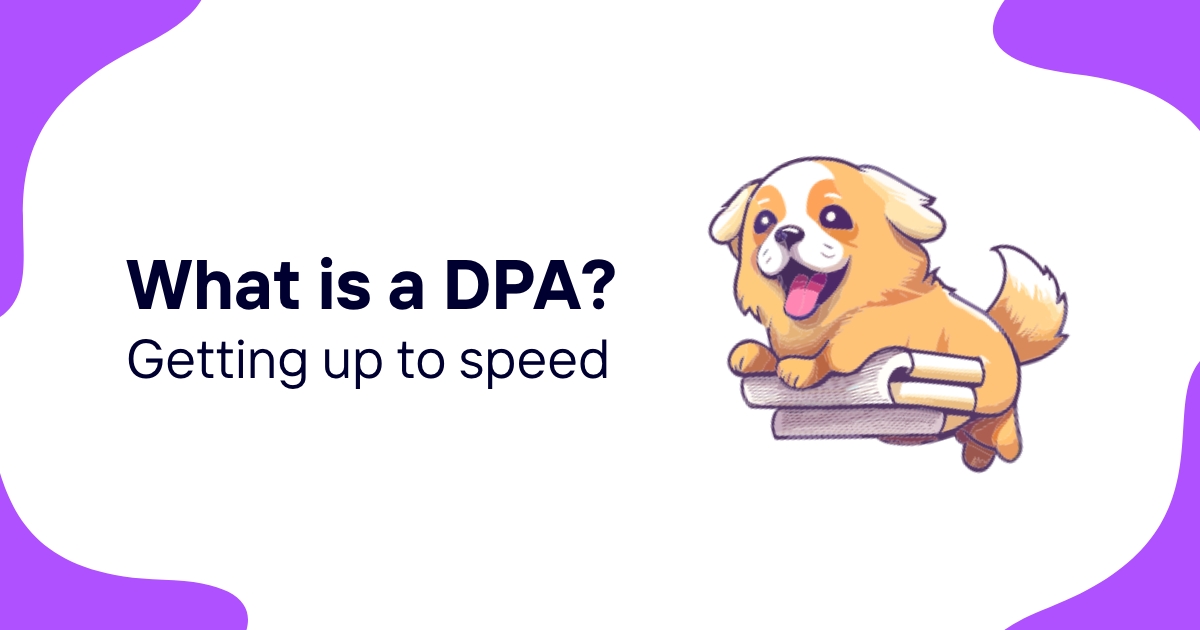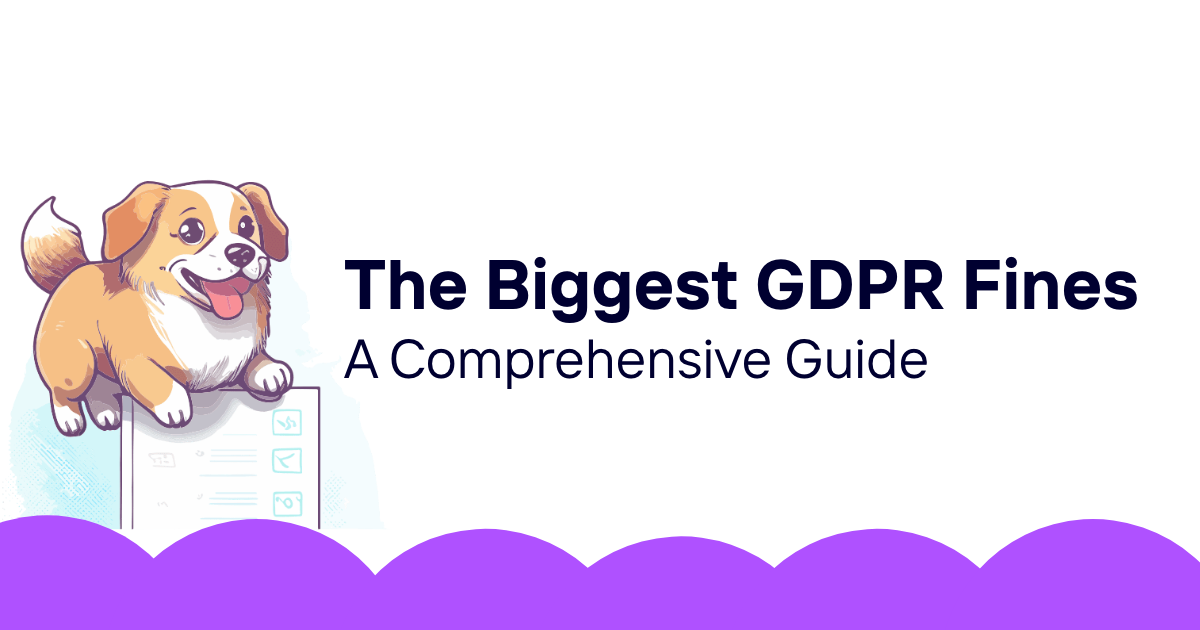When the European Union's General Data Protection Regulation (GDPR) came into effect, it fundamentally changed how organizations handle personal data. But here's the thing about GDPR compliance – it's not just about having the right policies in place. It's about making sure your entire team actually knows what they're doing with personal data.
Think about it this way: you could have the most beautifully written privacy policy in the world, but if your marketing team doesn't understand consent requirements or your IT department doesn't grasp data retention principles, you're still at risk. GDPR training transforms theoretical compliance into practical, everyday competence.
Table of contents
- Why GDPR training matters for your organization
- Core GDPR concepts every employee should understand
- Training requirements by role and department
- Legal basis for processing personal data
- Consent management in practice
- Data subject rights and response procedures
- Data protection impact assessments
- International data transfers and safeguards
- Designing effective GDPR training programs
- Training for research and higher education
- Measuring training effectiveness
- Common training pitfalls to avoid
- Building a culture of data protection
- Keeping training current with regulatory changes
- How compliance software supports ongoing training
Why GDPR training matters for your organization
GDPR applies to any organization that processes personal data of EU residents, regardless of where the organization is located. This extraterritorial reach means that a company in California collecting email addresses from German customers needs to comply with GDPR requirements.
The regulation doesn't just impose rules – it demands accountability. Organizations must be able to demonstrate compliance, not simply claim it. This is where training becomes your secret weapon (well, not so secret anymore).
Let's break down why GDPR training is absolutely critical:
Risk mitigation comes first. The potential fines under GDPR can reach 4% of annual global turnover or €20 million, whichever is higher. But fines are just the tip of the iceberg. Data breaches can result in regulatory investigations, legal action from affected individuals, and significant reputational damage.
Operational efficiency follows close behind. When employees understand GDPR requirements, they make better decisions about data handling from the start. This reduces the need for costly remediation efforts and streamlines compliance processes.
Trust building with customers and partners becomes easier. Organizations that demonstrate genuine commitment to data protection through comprehensive training often find it easier to build trust with customers, partners, and vendors.
Competitive advantage emerges naturally. In an environment where data privacy concerns are growing, organizations with strong data protection practices and well-trained staff often have an edge over competitors who treat compliance as an afterthought.
Core GDPR concepts every employee should understand
Before diving into role-specific training, every employee should grasp these fundamental GDPR concepts. Think of these as the building blocks that support more detailed training modules.
Personal data definition and scope
Personal data under GDPR is much broader than many people realize. It includes any information relating to an identified or identifiable natural person. This covers obvious things like names and email addresses, but also IP addresses, device IDs, location data, and even pseudonymized data that could potentially be re-identified.
The concept of "special categories" of personal data requires extra attention. This includes data revealing racial or ethnic origin, political opinions, religious beliefs, trade union membership, genetic data, biometric data, health data, and data concerning sex life or sexual orientation.
Data processing principles
GDPR establishes six key principles that govern all data processing activities:
- Lawfulness, fairness, and transparency – Processing must have a legal basis and individuals must be informed about how their data is used
- Purpose limitation – Data must be collected for specified, explicit, and legitimate purposes
- Data minimization – Only necessary data should be collected and processed
- Accuracy – Data must be accurate and kept up to date
- Storage limitation – Data should not be kept longer than necessary
- Integrity and confidentiality – Appropriate security measures must protect the data
Individual rights under GDPR
Data subjects have eight specific rights under GDPR. Every employee should understand these rights and know how to respond when individuals exercise them:
- Right to be informed about data processing
- Right of access to personal data
- Right to rectification of inaccurate data
- Right to erasure ("right to be forgotten")
- Right to restrict processing
- Right to data portability
- Right to object to processing
- Rights related to automated decision-making and profiling
Training requirements by role and department
Different roles within an organization face different GDPR risks and responsibilities. Effective training programs recognize these differences and tailor content accordingly.
Executive leadership and board members
Senior executives need to understand GDPR from a strategic and governance perspective. Their training should cover accountability requirements, the role of Data Protection Officers, and how to build data protection into business strategy and decision-making processes.
Board members specifically need to understand their oversight responsibilities and how GDPR compliance fits into broader risk management frameworks.
Data Protection Officers (DPOs)
Organizations required to appoint a DPO need someone with expert-level knowledge. DPO training goes far beyond basic compliance to cover detailed legal requirements, conducting Data Protection Impact Assessments (DPIAs), handling regulatory interactions, and building organization-wide compliance programs.
IT and security teams
Technical teams need deep training on data security requirements, including encryption, access controls, and incident response procedures. They should understand privacy by design principles and how to implement technical and organizational measures that support GDPR compliance.
Marketing and sales teams
These teams work directly with customer data and consent mechanisms. Their training should focus heavily on lawful bases for processing, consent requirements, legitimate interests assessments, and direct marketing rules.
Marketing teams particularly need to understand the high bar for valid consent under GDPR – it must be freely given, specific, informed, and unambiguous. Pre-ticked boxes and bundled consent don't meet these standards.
Human resources departments
HR teams process employee data, which has its own set of considerations under GDPR. Training should cover employment law interactions, employee rights, data processing in recruitment, and handling sensitive employee information.
Customer service and support
Front-line staff need practical training on handling data subject requests, verifying individual identities, and knowing when to escalate issues to compliance teams or DPOs.
Legal basis for processing personal data
One of the most practical aspects of GDPR training involves understanding the six legal bases for processing personal data. Organizations must identify and document which legal basis applies to each processing activity.
Consent requires active, informed agreement from the individual. The bar for valid consent is high – individuals must understand what they're agreeing to and be able to withdraw consent easily. Consent works well for marketing communications but can be problematic for core business functions since individuals can withdraw it at any time.
Contract allows processing that's necessary for performing a contract with the individual or taking steps before entering a contract. This covers many basic business activities like processing orders, providing services, and managing customer accounts.
Legal obligation permits processing required by law. This might include tax reporting, employment law compliance, or regulatory requirements in specific industries.
Vital interests allows processing necessary to protect someone's life. This legal basis has a narrow scope and typically applies in emergency situations.
Public task covers processing necessary for performing official functions or tasks in the public interest. This primarily applies to public authorities and organizations carrying out public functions.
Legitimate interests provides flexibility for processing that's necessary for legitimate business purposes, provided the processing doesn't override individual rights and freedoms. This requires a three-part assessment: identifying the legitimate interest, showing the processing is necessary, and conducting a balancing test.
The following table summarizes when each legal basis typically applies:
| Legal Basis | Common Use Cases | Key Considerations |
|---|---|---|
| Consent | Marketing emails, cookies, voluntary surveys | Can be withdrawn; high bar for validity |
| Contract | Order processing, service delivery, customer accounts | Must be truly necessary for the contract |
| Legal obligation | Tax reporting, employment records, regulatory compliance | Clear legal requirement must exist |
| Vital interests | Emergency medical situations | Very narrow scope; life-threatening situations |
| Public task | Government services, public sector functions | Mainly for public authorities |
| Legitimate interests | Fraud prevention, IT security, internal admin | Requires balancing test; most flexible |
Consent management in practice
Consent deserves special attention in GDPR training because it's frequently misunderstood and misimplemented. Valid consent under GDPR must meet four criteria: it must be freely given, specific, informed, and unambiguous.
Freely given means individuals have a genuine choice. Consent cannot be bundled with terms and conditions, and services cannot be conditional on non-essential data processing. This is where many organizations struggle – you can't require consent for marketing emails as a condition of creating an account if the marketing isn't necessary for the service.
Specific requires separate consent for different processing purposes. Blanket consent for "improving our services and sending communications" doesn't meet GDPR standards. Organizations need specific consent for email marketing, SMS marketing, data sharing with partners, and so on.
Informed means providing clear information about the processing. Individuals need to understand what data you're collecting, how you'll use it, who you might share it with, and how long you'll keep it.
Unambiguous requires positive action. Pre-ticked boxes, opt-out systems, and inactivity don't constitute valid consent. Individuals must actively indicate agreement through actions like clicking an unticked checkbox or pressing a "subscribe" button.
Training should also cover consent withdrawal. Organizations must make it as easy to withdraw consent as it was to give it. If someone can subscribe to your newsletter with one click, they should be able to unsubscribe with one click too.
Data subject rights and response procedures
Data subject rights requests are where GDPR compliance becomes very practical and visible. Organizations need clear procedures and trained staff to handle these requests properly.
Access requests are the most common type. Individuals can request confirmation that you're processing their personal data and ask for a copy of that data. The response must include specific information about the processing, including purposes, categories of data, recipients, retention periods, and sources of the data.
Training should emphasize that access requests have tight deadlines – generally one month from receipt, though this can be extended by two months for complex requests. The response must be provided free of charge in most cases.
Rectification requests require organizations to correct inaccurate personal data. This seems straightforward but can get complicated when determining what constitutes "inaccurate" data, particularly for opinions or subjective assessments.
Erasure requests (the "right to be forgotten") allow individuals to request deletion of their personal data in specific circumstances. These include situations where the data is no longer necessary for the original purpose, consent is withdrawn, or the data was unlawfully processed.
However, erasure isn't absolute. Organizations can refuse erasure requests when they need to keep the data for legal compliance, exercising freedom of expression, public health reasons, or establishing legal claims.
Data portability requests apply when processing is based on consent or contract and carried out by automated means. Individuals can request their data in a structured, commonly used, machine-readable format and have it transmitted to another organization.
Training should include practical scenarios and role-playing exercises. What do you do when someone calls claiming to be a customer and demanding all their data? How do you verify identity? When should you escalate to legal or compliance teams?
Data protection impact assessments
DPIAs represent one of the more complex aspects of GDPR compliance, requiring structured risk assessment and mitigation planning. Organizations must conduct DPIAs for processing that's likely to result in high risks to individual rights and freedoms.
GDPR specifically requires DPIAs for systematic monitoring of publicly accessible areas, large-scale processing of special categories of data, and systematic evaluation or scoring of individuals. But the requirement extends beyond these specific cases to any high-risk processing.
Training should help employees recognize when DPIA might be needed. New customer profiling systems, AI-powered decision-making tools, employee monitoring systems, and large-scale data analytics projects often trigger DPIA requirements.
The DPIA process involves several key steps:
- Description of processing – What data will be processed, for what purposes, by whom, and using what systems
- Necessity and proportionality assessment – Why the processing is needed and whether it's proportionate to the intended purpose
- Risk identification – What could go wrong and what would be the impact on individuals
- Risk mitigation – What measures will reduce identified risks to acceptable levels
DPOs must be consulted during DPIA preparation, and in some cases, data protection authorities must be consulted before processing begins.
International data transfers and safeguards
International data transfers present ongoing challenges for organizations operating across borders. GDPR requires adequate protection for personal data transferred outside the European Economic Area.
The EU maintains a list of countries with adequate data protection levels. Transfers to these countries can proceed without additional safeguards. Currently, this list includes countries like the UK, Canada, Japan, and South Korea.
For transfers to countries without adequacy decisions (including the United States for most purposes), organizations need appropriate safeguards. Standard Contractual Clauses (SCCs) are the most common mechanism. These are pre-approved contract terms that provide sufficient protection for international transfers.
Training should cover practical implications of transfer restrictions. Cloud services, customer support systems, and analytics platforms often involve international transfers. Employees need to understand when to seek guidance on transfer mechanisms and documentation requirements.
The situation with US transfers deserves particular attention. The EU-US Data Privacy Framework provides an adequacy decision for transfers to participating US companies, but organizations must verify that their US partners are actually certified under the framework.
Designing effective GDPR training programs
Successful GDPR training goes beyond information delivery to change behavior and build genuine competence. This requires careful program design and ongoing reinforcement.
Start with baseline assessment. Before designing training content, assess current knowledge levels and identify specific gaps. This helps tailor content and focus resources where they're most needed.
Use scenario-based learning. Abstract regulatory concepts become clearer through practical scenarios. Instead of just explaining consent requirements, walk through realistic examples of consent collection and management.
Make it role-relevant. Generic training that tries to cover everything for everyone often fails to stick. Sales teams need detailed training on marketing consent but probably don't need to understand DPIA procedures in detail.
Include hands-on practice. Particularly for staff who handle data subject requests or consent management, include practical exercises and simulations. Let customer service staff practice handling access requests with guidance and feedback.
Test understanding regularly. Quizzes and assessments help reinforce learning and identify areas needing additional attention. But avoid making tests feel punitive – the goal is learning, not catching people out.
Provide ongoing support. GDPR compliance isn't a one-time training event. Regular refreshers, updates on regulatory developments, and just-in-time support for specific situations help maintain competence over time.
Training for research and higher education
Research institutions and universities face unique GDPR challenges that require specialized training approaches. Academic freedom, research purposes, and student data create a complex regulatory environment.
Research exemptions and limitations provide some flexibility under GDPR, but they're narrower than many researchers assume. The research exemption allows some deviation from normal purpose limitation requirements, but it doesn't eliminate all GDPR obligations.
Research organizations still need lawful bases for processing, must implement appropriate security measures, and generally must respond to data subject rights requests. Training should clarify what the research exemptions actually permit and require.
Student data processing involves multiple legal bases and purposes. Universities process student data for educational delivery (contract), regulatory compliance (legal obligation), and institutional administration (legitimate interests). Training should help staff understand which legal basis applies to different types of student data processing.
International research collaboration often involves complex data sharing arrangements. Training should cover the additional considerations for sharing research data across borders and the specific safeguards available for research purposes.
Ethics committee and institutional review board training needs special attention to GDPR requirements. Research ethics review must consider data protection implications alongside traditional research ethics concerns.
Measuring training effectiveness
Effective GDPR training programs include mechanisms for measuring success and identifying areas for improvement. This goes beyond simple completion rates to assess actual competence and behavior change.
Knowledge retention testing helps verify that training content is being absorbed and retained. But tests should be designed to assess understanding, not just memorization. Scenario-based questions often work better than abstract regulatory definitions.
Incident tracking provides real-world feedback on training effectiveness. Are data subject requests being handled properly? Are staff escalating potential breaches appropriately? Incident patterns can reveal training gaps.
Compliance audit results offer another measure of training success. Regular internal audits can assess whether trained staff are actually implementing GDPR requirements in their daily work.
Self-assessment surveys help gauge confidence levels and identify areas where staff feel they need additional support. Anonymous surveys often provide honest feedback about training quality and relevance.
Behavioral observation through quality monitoring or compliance spot-checks can reveal gaps between training content and actual practice.
Common training pitfalls to avoid
Many organizations make predictable mistakes when implementing GDPR training programs. Learning from these common pitfalls can improve training effectiveness significantly.
One-size-fits-all approaches fail to address the specific needs and risk profiles of different roles. Marketing teams and IT security staff need different depth and focus in their GDPR training.
Information overload occurs when training tries to cover every aspect of GDPR in detail for every audience. This often results in confusion and poor retention rather than competence.
Checkbox mentality treats training as a compliance requirement to be completed rather than a competence-building exercise. This usually produces poor learning outcomes and limited behavior change.
Outdated content becomes a problem when training materials aren't regularly updated to reflect regulatory guidance, court decisions, and evolving best practices.
Lack of practical application leaves staff unable to apply abstract regulatory concepts to real-world situations they encounter in their work.
Poor timing can undermine training effectiveness. Training delivered months before someone needs to use the knowledge often fails to stick when it's actually needed.
Building a culture of data protection
Successful GDPR compliance requires more than knowledge transfer – it needs a culture where data protection is valued and integrated into daily decision-making processes.
Leadership commitment sets the tone for the entire organization. When executives demonstrate genuine commitment to data protection through their decisions and resource allocation, it signals importance to the rest of the organization.
Making privacy personal helps staff understand why data protection matters. Connecting GDPR requirements to personal experiences with data misuse or privacy violations can increase engagement and motivation.
Recognition and incentives for good data protection practices reinforce desired behaviors. This might include recognizing teams that implement privacy by design or individuals who identify and report potential compliance issues.
Integration with business processes makes data protection a natural part of how work gets done rather than an additional burden. This includes incorporating privacy considerations into project planning, vendor selection, and system design processes.
Open communication about data protection challenges and successes helps normalize discussion of privacy issues and encourages staff to seek guidance when they're unsure about requirements.
Keeping training current with regulatory changes
GDPR isn't static – regulatory guidance continues to evolve, courts interpret requirements, and supervisory authorities issue new opinions. Effective training programs must adapt to these changes.
Regulatory monitoring helps identify when training updates are needed. This includes tracking guidance from supervisory authorities, court decisions, and updates to international transfer mechanisms.
Regular content review ensures training materials remain accurate and current. Annual reviews are typically sufficient for core content, but specific modules may need more frequent updates.
Timely communication of significant changes helps staff stay current between formal training updates. Brief updates on new guidance or regulatory developments can supplement comprehensive training programs.
Expert input from legal counsel, DPOs, or external privacy professionals helps ensure training content accurately reflects current requirements and best practices.
How compliance software supports ongoing training
Modern compliance platforms transform GDPR training from a periodic event into an ongoing competence-building process. These tools provide several advantages over traditional training approaches.
Automated tracking ensures that training requirements are met without manual oversight. The system can automatically assign role-specific training modules, track completion rates, and send reminders for refresher training.
Real-time guidance provides just-in-time support when staff encounter specific compliance questions. Instead of waiting for the next training session, employees can access relevant guidance immediately when they need it.
Integration with business processes embeds training into daily workflows. When someone initiates a new marketing campaign or data collection process, the system can prompt them to review relevant privacy requirements and complete any necessary assessments.
Documentation and audit trails automatically capture training completion, knowledge assessment results, and ongoing competence demonstrations. This supports accountability requirements and simplifies regulatory examinations.
ComplyDog provides exactly this type of integrated approach to GDPR training and compliance management. The platform combines comprehensive training modules with practical tools for managing consent, handling data subject requests, and conducting privacy impact assessments. Rather than treating training as a separate compliance activity, ComplyDog integrates learning into the daily compliance workflows that keep organizations on track with GDPR requirements.
When training becomes part of an integrated compliance platform, it transforms from a periodic obligation into a continuous competence-building process that actually improves how organizations handle personal data protection in practice.
